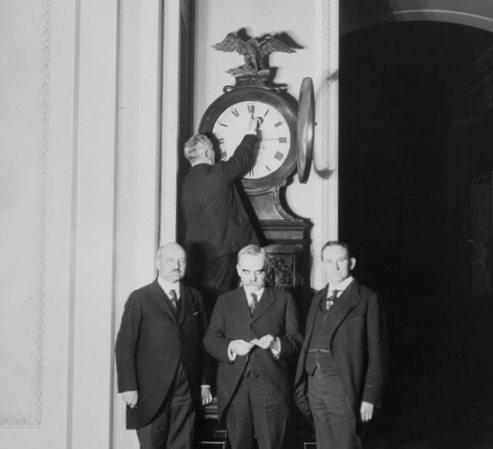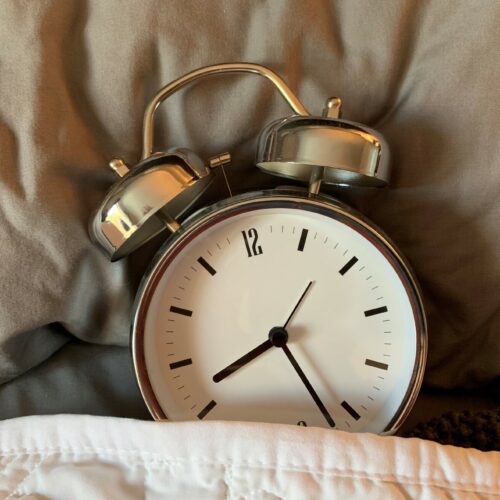
Washington Legislature Votes To End Twice-Yearly Time Changes (Your Move, Oregon)
READ ON
A measure to adopt daylight saving time all year-round is now one small step away from the Washington governor’s desk. The same issue is still chugging along in the Oregon and California legislatures as part of a loosely coordinated movement to dispense with the unpopular ritual of springing forward and falling back.
There is a hitch though. Western states looking to spring forward for good can’t actually move to permanent daylight saving time without a change in federal law, which Congress seems to be in no hurry to make.
The Washington state Senate voted 46 to 2 late Tuesday to abolish the twice-yearly time switch. The legislation has already passed the state House, which is expected to concur in some wording changes before delivering the bill to Gov. Jay Inslee.
State Sen. Sam Hunt (D-Olympia) said perhaps a unified front of Washington, Oregon, California and maybe British Columbia can convince federal lawmakers to give the OK.
“Hopefully, we can keep this rolling and get this accomplished in the next year or so,” Hunt said during Senate debate.
Earlier this month, the Oregon Senate voted by a wide bipartisan margin for permanent daylight saving time effective whenever neighboring Washington and California adopt the same. The Oregon House now needs to weigh in.
Sticking with daylight saving time year-round would give people an extra hour of daylight on winter evenings. The sun would rise later during winter mornings than under the current observance of standard time between November and mid-March.
State Sen. Jim Honeyford (R-Sunnyside) said judging from the emails and letters his office received, sentiment is running 10-to-1 in favor of ditching the time switch. He argues the ritual no longer serves its original rationale of saving energy.
“Perhaps this will stop the switch,” Honeyford said. “Whether Congress will act or not, that’s unknown.”
Few have come to the defense of the twice-yearly time change, but there are objections to the choice of moving permanently to daylight time as opposed to year-round standard time.
Biology professor Horacio de la Iglesia at the University of Washington said he contacted his legislators to tell them that it makes perfect sense to stick to one time throughout the year, but that standard time should be the one chosen. Otherwise, there would be “a misalignment” between our biological clocks and the time imposed by society, he argued.
“Our biological clocks, even in big cities like Seattle, are still reset by the natural daylight through our exposure to sun,” de la Iglesia wrote in an email to public radio. “In the winter, we’d be asking some teenagers to start school at 7:30 a.m. (social time) when their real biological time would be close to 4:30 a.m.”
“Sticking to DST is a truly bad idea from a medical and public health standpoint, and it will most likely increase the prevalence of depression as well as physical health negative outcomes,” de la Iglesia said. “The solution is to stick to standard time instead of DST.”
Washington Gov. Jay Inslee is among the seemingly few partisans who don’t feel strongly about changing the clocks.
“I am remarkably agnostic on this issue,” Inslee said last week during a brief Q&A with reporters. “I can’t express a preference. That doesn’t mean I won’t have one tomorrow.”
Oregon Governor Kate Brown says she loves the idea of ditching the twice-yearly time switch.
Last November, California voters gave the movement to abolish the twice-yearly time change a surge of momentum by voting 60 percent in favor of permanent daylight saving time during a referendum. The California Legislature still needs to pass implementing legislation.
The pending Oregon and Washington bills started out with planned referrals to the voters for final approval, but those clauses were stripped out to save the expense of statewide referendums.
The uncertainty about when Congress might give its blessing to states to observe permanent daylight saving time makes it unclear when the time change ritual could actually be abolished in West Coast states. Congress needs to get involved because while states can adopt year-round standard time, the federal Uniform Time Act does not currently allow for year-round daylight saving time.
Oregon Senator Ron Wyden recently signed on as a co-sponsor to a Florida senator’s bill to make daylight saving time permanent nationwide in one fell swoop in every state that observes it. A separate U.S. House measure introduced last month from Utah Congressman Rob Bishop would simply give states the option to observe daylight saving time year-round. Neither measure has been scheduled for a committee hearing at this time.
Related Stories:

U.S. Senate Votes To Make Daylight Saving Time Permanent
U.S. Senate votes to make Daylight Saving Time permanent. CREDIT: HENRIQUE SIMPLICIO / FLICKR/FLIC.KR/P/F1JXBL Listen Tom Banse reports on efforts to make Daylight Saving Time permanent / Runtime: 1 minute

Daylight Saving Time Starts Sunday – Industries Mixed On Ditching The Switch
Read Daylight saving time starts early Sunday morning, so remember to set your clocks ahead by an hour this weekend. That’s despite the fact that Oregon and Washington have passed

Washington State Lawmakers Propose Year-Round Standard Time To Get Around Congress
Washington state senators are trying a new gambit to stop the twice-yearly ritual of changing our clocks from standard time to daylight time and back again. A previous effort to move the whole West Coast onto permanent daylight saving time failed to win requisite congressional support. So now, a bipartisan group of state lawmakers is pushing for Pacific Standard Time to be observed year-round.
















